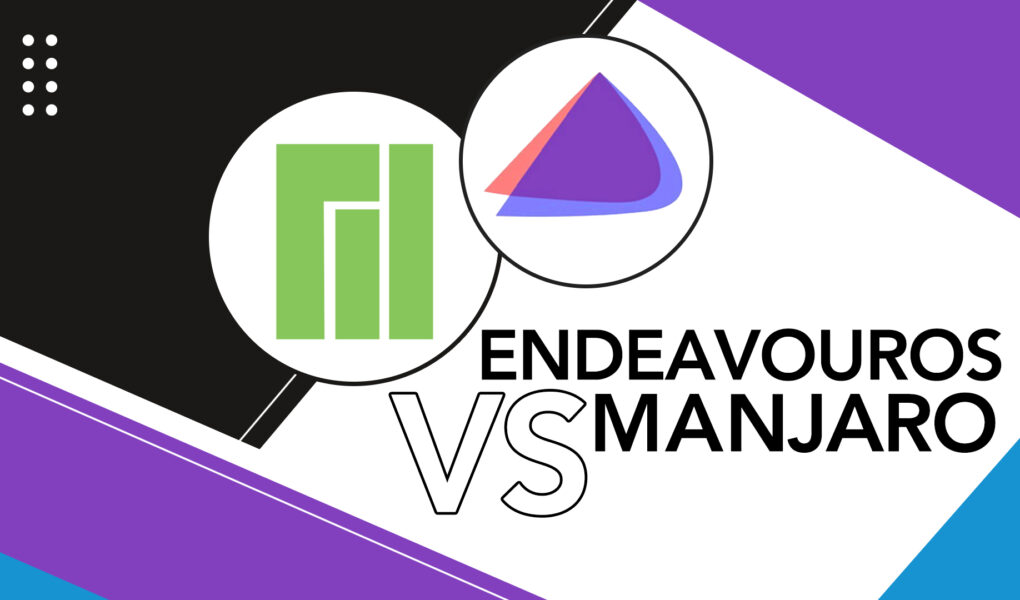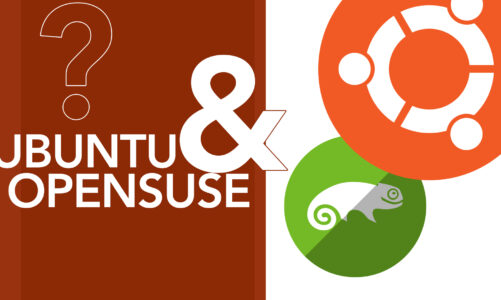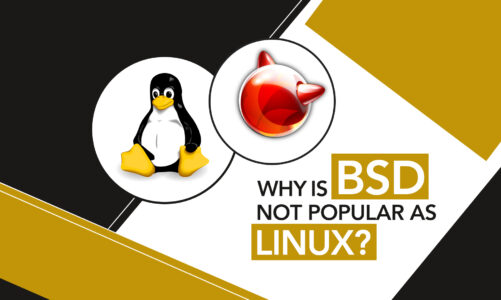When it comes to the world of Linux distributions, there’s a wealth of options available, each with its unique features, capabilities, and communities. Two such options are Manjaro and EndeavourOS, both of which are derivatives of the Arch Linux distribution, renowned for their rolling-release style and cutting-edge software.
Nevertheless, despite their shared heritage, these two distributions exhibit notable distinctions. Now you might be thinking, which one’s the best? Well, knowing the features and differences between the two will help make a decision. So, let’s get started!
Overview of Manjaro
Manjaro is a user-friendly, open-source Linux distribution derived from Arch Linux, designed to provide a balance between full control and ease of use. Its significance lies in its accessibility to newcomers while retaining the robustness and versatility valued by seasoned Linux users. It boasts a rolling release model, ensuring up-to-date systems without reinstallation, and offers a variety of desktop environments.
Overview of EndeavourOS
EndeavourOS is a dynamic, open-source Linux distribution built around Arch Linux that strikes a balance between practical functionality and user autonomy. Its importance stems from its effort to maintain the robustness and rolling release model of Arch while enhancing the user experience with a more straightforward setup process.
EndeavourOS provides a diverse selection of desktop environments, enabling users to customize their experience based on their personal preferences. Notable features include an intuitive installer, a friendly and helpful community, and access to the comprehensive Arch User Repository (AUR).
Manjaro Vs EndeavourOS: Key Features Comparison
1: Installation Process
Manjaro offers a streamlined, user-friendly installation process. With its graphical installer, Calamares, even beginners can install the system smoothly. The installer provides options for automatic partitioning, encryption, and multiple desktop environment selections, which include Xfce (the default), KDE, GNOME, and several others.
EndeavourOS, on the other hand, is more oriented towards intermediate and advanced users. It uses a terminal-based installer initially but also provides a net installer that allows the user to select their preferred desktop environment during the installation. Its range of desktop environments includes Xfce (default), KDE, GNOME, Cinnamon, MATE, and more.
2: Software Management
Manjaro uses the Pacman package manager from Arch but adds its software management tools, such as Pamac GUI. It also supports Snap and Flatpak integrations for a broader range of applications. Its repositories contain software that has been tested thoroughly in Manjaro’s own environment before release, ensuring stability.
EndeavourOS, like Manjaro, uses Pacman for package management, but it leans more towards the Arch side of things. It offers the option of using yay, an AUR helper, which allows easy access to the Arch User Repository (AUR).
3: System Updates
Manjaro operates on a ‘curated’ rolling release model. This means that while it continually updates, there is a delay between when new software and updates become available and when they’re incorporated into Manjaro. This delay allows Manjaro’s team to test updates extensively, providing a more stable, though slightly less bleeding-edge, experience.
EndeavourOS follows the same rolling release model as Arch, providing updates as soon as they’re available. This means users always have the most recent software but may also face instability issues if any bugs are present in the new updates.
4: System Resources and Performance
Manjaro is designed to be lightweight and fast, with its default Xfce desktop environment known for its efficiency. Even with other environments, Manjaro is optimized for performance, and many users find it to be faster than other distributions they’ve used.
EndeavourOS is also designed for speed and lightness. It is arguably even more lightweight than Manjaro, primarily because it offers a more barebones experience by default. It allows users to set up their system exactly how they want it, which can lead to a highly optimized system if the user is knowledgeable.
5: Community and Support
Manjaro has an active and welcoming community. The forums serve as a valuable resource for both novice and seasoned users alike. Manjaro also offers comprehensive documentation to help users navigate the system.
EndeavourOS also offers a supportive community. While the community may be slightly smaller than Manjaro’s, it is known for its helpfulness and knowledgeable members. The EndeavourOS website provides a dedicated forum and a wiki with detailed documentation, making it easier for users to find assistance and guidance.
6: User Experience
Manjaro strives to deliver a seamless and user-friendly experience right from the initial setup. It includes various pre-installed applications and a customized desktop environment, which are carefully chosen to create a cohesive and visually appealing user interface. Manjaro also provides an intuitive settings manager, making it easy to configure system settings.
EndeavourOS focuses on simplicity and minimalism. It provides a clean and straightforward desktop environment, allowing users to build their own personalized experience. EndeavourOS avoids excessive pre-installed software, giving users the freedom to select their preferred applications and customize the system to their liking.
Which one’s the best?
Your decision between Manjaro and EndeavourOS ultimately relies on your individual requirements and personal preferences. If you’re new to Linux or prefer a more stable experience, Manjaro might be the better option. However, if you want a more hands-on experience and prioritize access to the latest software, EndeavourOS could be the right choice for you.
Conclusion
In the Manjaro vs EndeavourOS comparison, both distributions have their strengths and cater to different types of users. Manjaro offers a more beginner-friendly experience with its user-friendly installation process and stability-focused approach. It is a great choice for those who prioritize ease of use and want a curated rolling-release model.
On the other hand, EndeavourOS is geared towards users who prefer more control, customization options, and a closer connection to the Arch Linux ecosystem. It provides a lightweight and minimalist approach, enabling users to build their system from the ground up and access the latest software updates directly from Arch.




